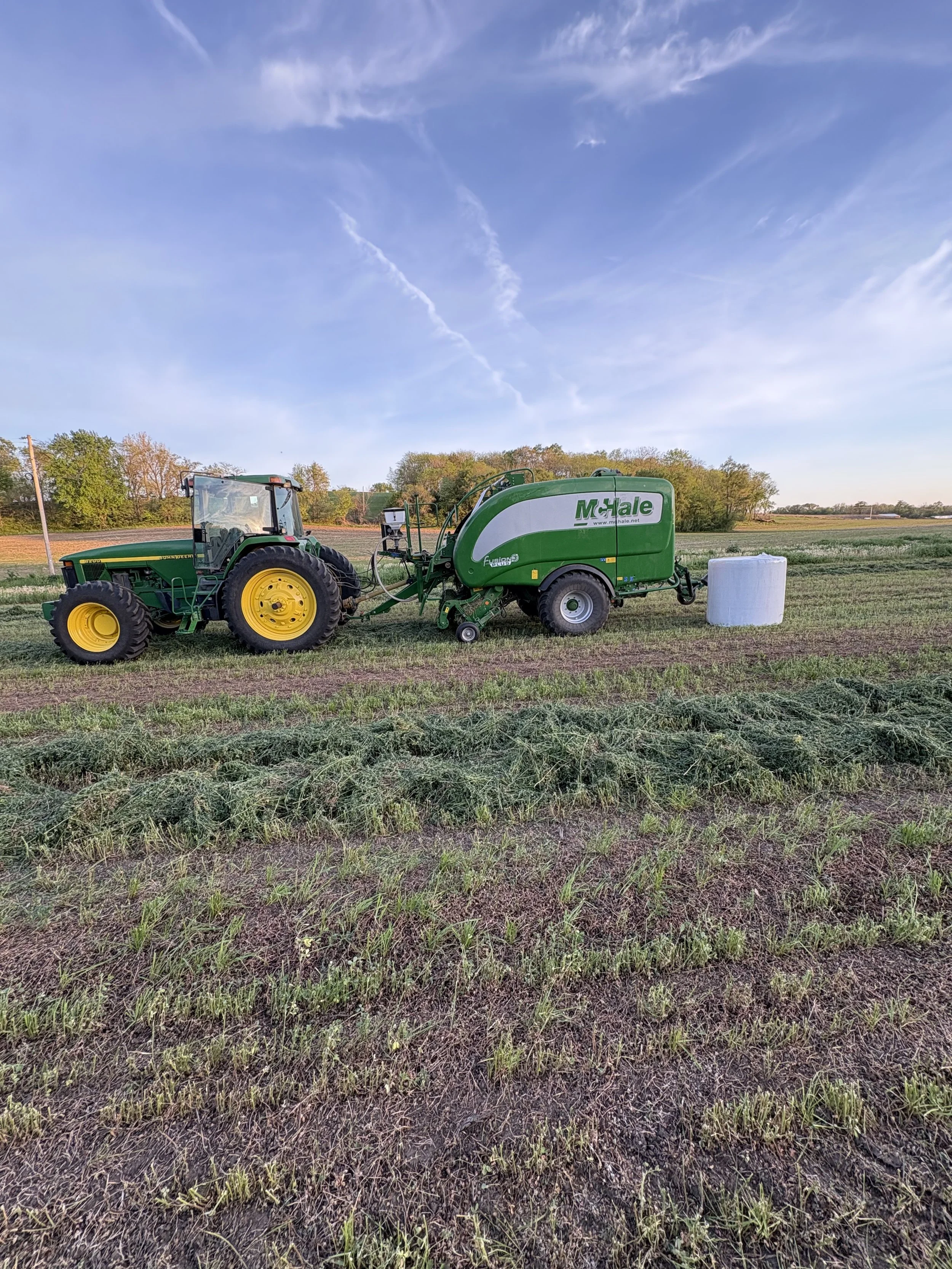
About Kurtz Family Farms
Welcome to Kurtz Family Farms: Where Quality Meets Care
At Kurtz Family Farms, we are dedicated to providing the finest grass-fed and grass-finished beef, raised with deep respect for our land and animals. Founded by Clayton and Amanda Kurtz, along with their three children—Mariana, Luca, and Catalina—our family-run farm is deeply rooted in values that prioritize sustainable farming practices.
Clayton's upbringing on a farm instilled in him a lifelong passion for animal care and stewardship of the land. As he and Amanda started their family, Clayton grew increasingly devoted to ensuring that their children had access to the highest quality food. Amanda, a board-certified nurse practitioner specializing in functional medicine, recognizes the profound impact that food and lifestyle choices have on overall quality of life and disease prevention or progression.
Together, we founded Kurtz Family Farms to produce exceptional beef while reinforcing our commitment to environmental health and wellness for our community.
Our Farming Philosophy
Back to Basics:
Our cattle enjoy fresh, lush grass every day as we rotate them from pasture to pasture, ensuring their happiness and health. We utilize rotational grazing practices that allow our pastures to replenish themselves without the need for added chemical fertilizers. You’ll find at least a dozen different forages growing in our pastures from grasses, legumes, and forbs. We have planted this diverse mixture to provide many benefits to both the land and the cattle. Legumes help to provide natural nitrogen to the grasses and increased protein to the cattle. Forbs such as chicory and plantain act as natural dewormers and parasite fighting plants. The constant moving also helps to keep cattle out of excessive mud, manure, and parasites which promotes natural health.
Aberdeen Angus Cattle
Our herd primarily consists of traditional Angus cattle known for their medium size. The modern cattle industry has shifted expectations toward larger cattle sizes, driven by industrialized packers and feedlots. However, this trend has correlated with a decline in meat quality, largely due to the emphasis on increased grain feeding in feedlots. Unlike these larger breeds that require additional grains for rapid weight gain, our heritage Aberdeen breed thrives on a grass-based diet, which supports their overall health and contributes to the superior quality of their meat. To put it simply, Aberdeen cattle can finish properly on grass, producing well marbled tasty meat.
Organic Hay
During winter months our pastures become dormant and stop growing. During this time our cattle thrive on organic baleage hay that we produce ourselves. These certified organic fields haven't been sprayed with chemicals for 10 to 25 years. By harvesting and storying our own hay it allows us to control the quality. To keep cattle gaining weight during winter months without feeding grain, high quality hay is very important.
Nutritional Philosophy
We live in a society that is often inundated with processed foods and exposed to environmental toxins. At Kurtz Family Farms, we believe in eating the way God intended us to—from the bone, from the ground, and from the tree. We are committed to providing nutrient-rich, wholesome food that supports health and wellness, ensuring our family's long-term vitality and quality of life.
What Makes Us Different
At Kurtz Family Farms, we prioritize the humane treatment of our cattle throughout their lives, including during handling and loading processes. Our cattle are accustomed to seeing us daily, which allows us to establish a trusting relationship with them. We strive to keep our animals calm and relaxed, as we believe that respect and compassion for our cattle contribute not only to their well-being but also to the quality of the meat they produce.
Understanding the Difference:
Grass-Fed vs. Grass-Finished Beef
When it comes to beef, the terms "grass-fed" and "grass-finished" are often used interchangeably; however, it is important to understand the significant distinctions between the two.
Grass-Fed Beef
Definition:
Beef labeled as "grass-fed" indicates that the cattle were primarily raised on a diet of grass and forage. Notably, the majority of cattle in the U.S. are grass-fed at some point in their lives, often during their first year as calves, before transitioning to feedlots.
Feeding Practices:
In the finishing phase, some grass-fed cattle are moved to feedlots where they are fed grains to promote rapid weight gain and marbling.
Nutritional Profile:
Grass-fed beef typically offers higher levels of omega-3 fatty acids, antioxidants, and vitamins compared to grain-fed beef. However, the nutritional benefits can vary based on whether the cattle were finished on grass or grains.
Grass-Finished Beef
Definition:
Grass-finished beef signifies that the cattle were not only grass-fed but also completed their growth exclusively on grass and forage without any grain in their diet.
Health Benefits:
Cattle raised on a grass-only diet until slaughter tend to produce meat with a more favorable omega-3 to omega-6 fatty acid ratio, elevated vitamin content, and a unique flavor profile that appeals to many consumers.
Animal Welfare and Sustainability:
Grass-finished cattle generally experience a longer lifespan and a more natural lifestyle, as they graze in pastures and exhibit natural behaviors, contributing to ethical and sustainable farming practices.
By understanding the differences between grass-fed and grass-finished beef, consumers can make informed choices about the quality and nutritional value of the meat they select for their families.






